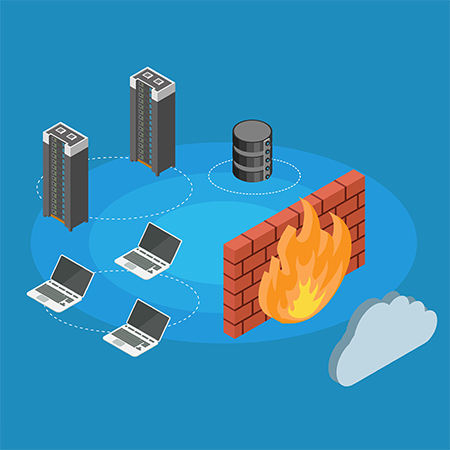The Adaptive Shield: How Enterprise Firewalls Are Evolving for a Borderless World

The enterprise firewall, long the cornerstone of network security, is undergoing its most significant transformation in decades. As the traditional network perimeter dissolves under the pressure of cloud migration, remote work, and IoT proliferation, this critical line of defense is being rearchitected. No longer just a static gateway, the modern firewall is becoming a dynamic, intelligent, and deeply integrated enforcement point for a zero-trust strategy, capable of securing data and applications regardless of their location.
According to Straits Research, the global enterprise firewall sector was valued at USD 13.45 billion in 2024 and is expected to grow from USD 14.93 billion in 2025 to reach USD 34.43 billion by 2033, growing at a CAGR of 11.01% during the forecast period (2025-2033). This robust growth reflects the critical and evolving role firewalls play as organizations navigate an increasingly complex and hostile digital landscape.
Key Players and Geographic Strategies
The competitive arena is defined by established security titans and cloud-native challengers, each vying for dominance in the new era of borderless security.
-
North America: Home to the industry's incumbents and innovators. Palo Alto Networks (USA) continues to lead with its ML-Powered Next-Generation Firewalls (NGFWs) and its Strata network security suite, which seamlessly integrates with its broader SASE (Secure Access Service Edge) platform. Fortinet (USA) leverages its custom security processing units (SPUs) to deliver unparalleled performance and efficiency in its FortiGate NGFWs, a key differentiator for high-throughput environments. Cisco (USA) remains a formidable force, integrating its Firepower Threat Defense (FTD) firewalls with its extensive networking and SD-WAN portfolio.
-
Europe: European players emphasize integration and regulatory compliance. Check Point Software Technologies (Israel) is renowned for its consolidated security architecture and robust threat prevention capabilities across its Quantum Firewall series. Siemens (Germany) offers specialized firewalls designed for operational technology (OT) and industrial control system (ICS) environments, a critical and growing niche.
-
Asia-Pacific: The region is a massive growth engine, driven by digital transformation. Huawei (China) is a major provider in the APAC region, offering a full stack of network security appliances. Japanese firms like SonicWall (owned by Francisco Partners) maintain a strong presence, particularly in the mid-market segment. A growing number of local vendors are also emerging to serve specific national security and compliance needs.
Analysis: Drivers of Growth and Emerging Trends
The 11.01% CAGR is fueled by the urgent need to secure hybrid work models and cloud-first infrastructures. The explosion of sophisticated cyber threats, including ransomware and state-sponsored attacks, necessitates advanced firewall protections that go beyond simple port and protocol blocking. Furthermore, stringent data privacy regulations globally are compelling organizations to invest in stronger network segmentation and data control enforcement.
Key trends redefining the enterprise firewall include:
-
The Convergence with SASE and SSE: The firewall is no longer a standalone appliance. It is increasingly becoming a integrated node within a Secure Service Edge (SSE) or full SASE architecture, blending network security functions with cloud-delivered security services like CASB and ZTNA for a consistent policy everywhere.
-
AI and Machine Learning Integration: Next-generation firewalls are leveraging AI for real-time threat detection and prevention, analyzing network traffic patterns to identify anomalies and zero-day attacks that signature-based detection would miss.
-
Container and Cloud-Native Firewalling: As applications move to microservices architectures in Kubernetes, firewalls are evolving into cloud-native forms. These are software-based and API-driven, designed to provide segmentation and threat protection within and between cloud clusters, not just at the network edge.
Recent News and Developments
The industry is rapidly evolving through strategic innovation and partnerships. Recently, Palo Alto Networks announced the general availability of its next-generation PAN-OS software, which introduces advanced AI capabilities for policy recommendation and attack surface reduction. Fortinet unveiled new high-end FortiGate appliances boasting unprecedented performance numbers, specifically designed to secure data centers and 5G networks. In a significant move highlighting cloud integration, Zscaler (USA) and CrowdStrike (USA) announced a deepened partnership to combine Zscaler's SSE platform with CrowdStrike's endpoint data, creating a more context-aware and adaptive security posture.
Summary
The enterprise firewall has successfully evolved from a simple perimeter guard into an intelligent, adaptive, and distributed enforcement engine. Its integration into broader security platforms and adoption of AI ensures it remains an indispensable component of modern cybersecurity, providing critical visibility and control in a world without traditional network boundaries.
- Art
- Causes
- Crafts
- Dance
- Drinks
- Film
- Fitness
- Food
- Games
- Gardening
- Health
- Home
- Literature
- Music
- Networking
- Other
- Party
- Religion
- Shopping
- Sports
- Theater
- Wellness


